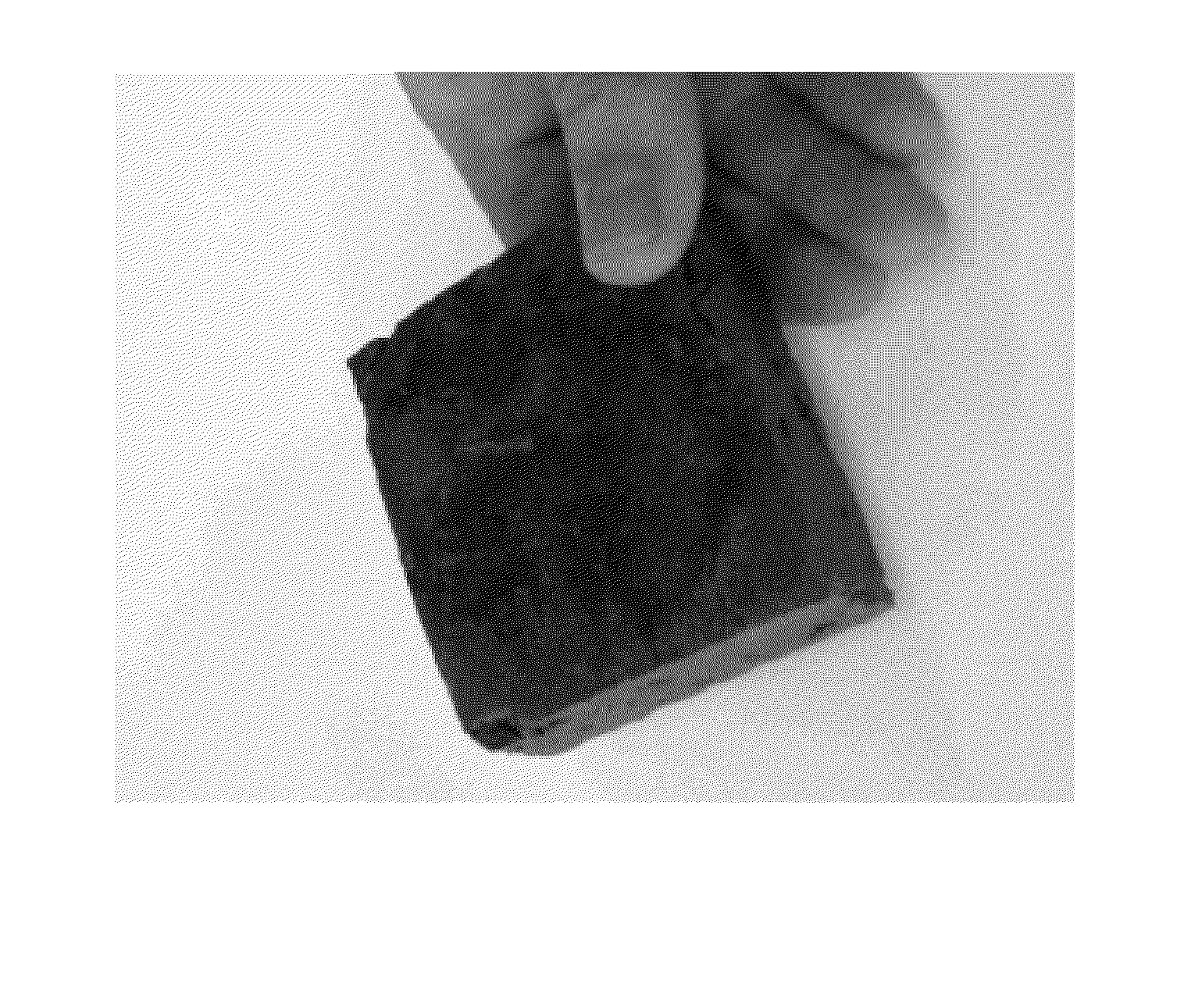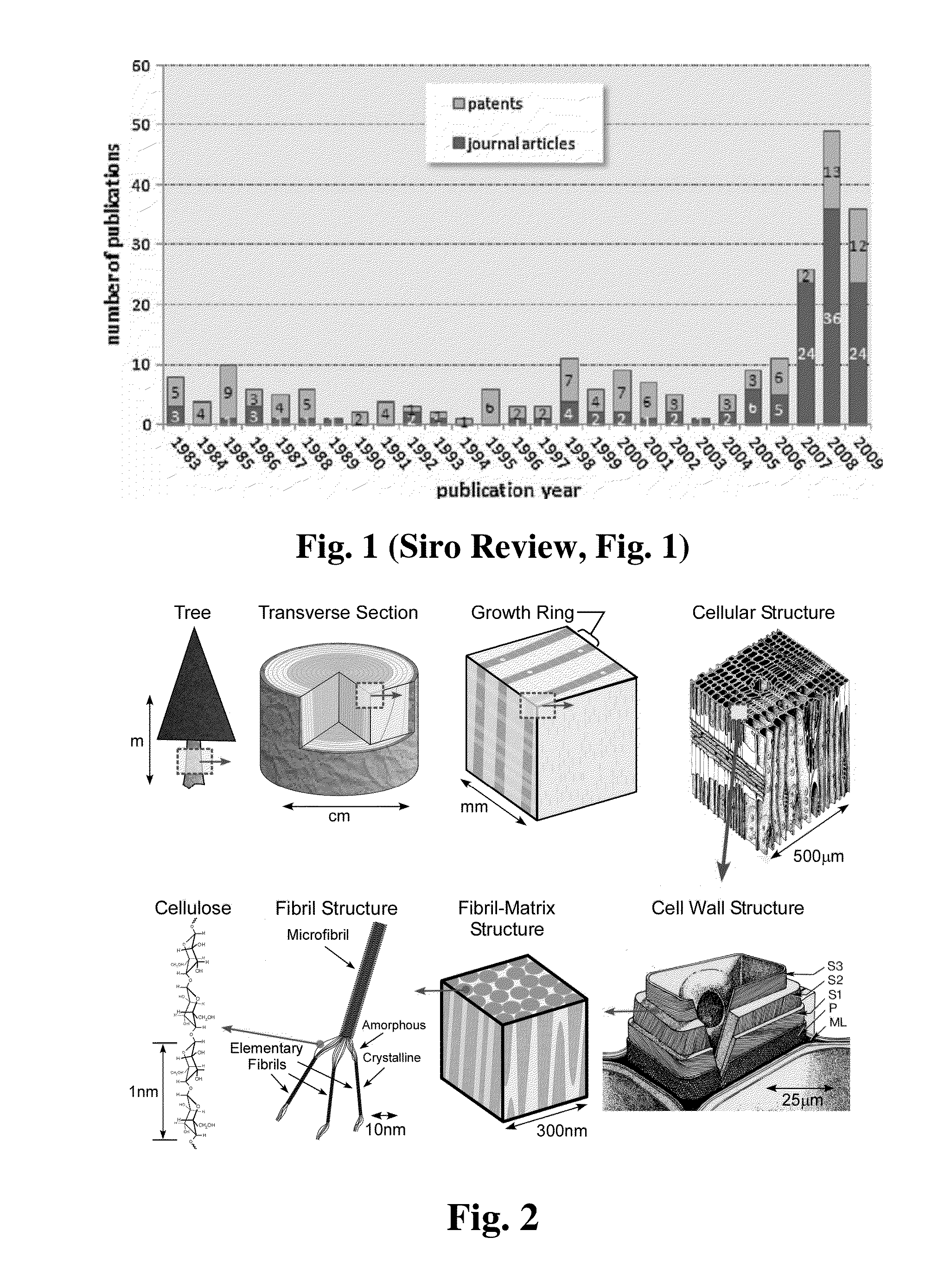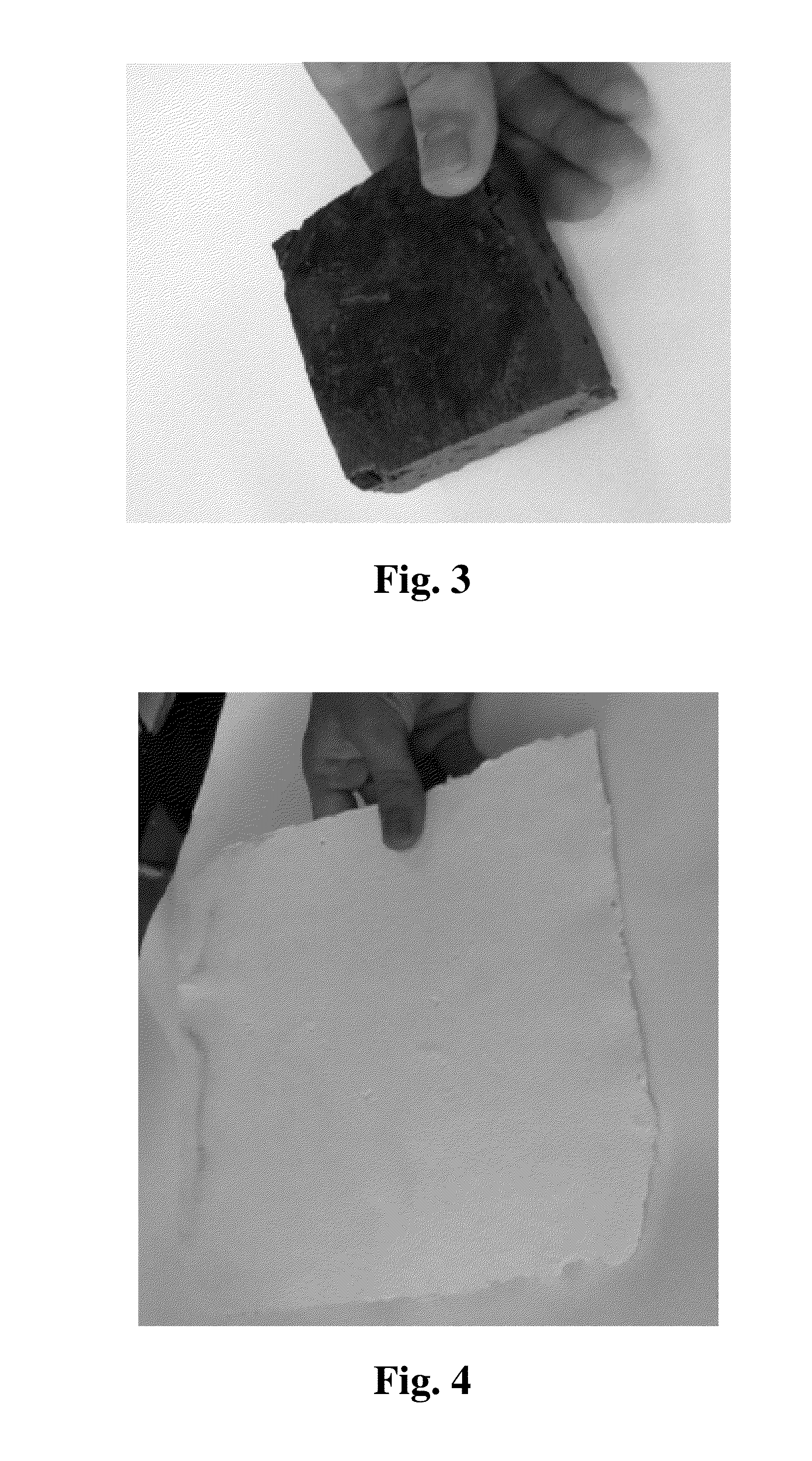Composite building products bound with cellulose nanofibers
- Summary
- Abstract
- Description
- Claims
- Application Information
AI Technical Summary
Benefits of technology
Problems solved by technology
Method used
Image
Examples
example 1
Wallboard or Drywall
[0065]A wall board product is produced having using cellulose nanofibers as an adhesive binder for minerals, such as kaolin or calcium carbonate. When dried, this blend creates a strong material. Tests have demonstrated that even tailings from oil sands processing can be used as the mineral source: FIG. 3 shows a board sample that contains cellulose nanofibers and tailings from Alberta oil sands. “Tailings” are made up of natural materials including fine silts, residual bitumen, salts and soluble organic compounds and solvent remaining after the oils are extracted. This sample is stronger than regular gypsum wall board even without the kraft paper cover.
[0066]The key costs are the transportation of the biomass to the facility, the energy to produce the nanofibers, the energy to dry the combination, and the shipping of the final product. Initial estimates of these costs give a cost similar to that for current gypsum wall board. The potential for sequestering of ca...
example 2
Paint
[0069]The addition of cellulose nanofibers into paint offers some potential benefits in terms of paint durability, reduction of binder costs, rheology control and compatibility with wood. The paint market represents 7.8 billion pounds of dry solids per year worth $23 billion. If cellulose nanofibers composed 10% of these solids, the capture of carbon would represent 0.6 million tons of carbon dioxide per year. FIG. 4 shows a film of material that has pigments similar to that of a paint mixed with 30% by weight cellulose nanofibers. This film has a higher elastic modulus compared to films produced with latex binder. Almost certainly these paint films would have higher resistance to scratches and abrasion than paint films that only contain latex.
[0070]In paint formulated with 10% less latex, the cost of the latex is replaced by the cost of the cellulose fibers, which are about half the cost of the latex. Therefore, the paint formulator will have a lower cost paint that is more du...
example 3
[0071]Another application of this material is in particle board, pressed, board, and oriented strand board. Particle board is currently held together with a melamine-formaldehyde resin. The US alone consumes 100 million tons / year of such particle board. While various fiber sources have been shown to make good board, all still use resins that are formaldehyde-based and release formaldehyde. Formaldehyde is known to be harmful to human health. Tests and methods in our labs have shown that the cellulose made in our lab has the potential to completely replace these resins. If the use of the resin is reduced 20% by weight, this application would represent the sequestration of 32.3 million tons / year of carbon.
[0072]Board manufacture: Wood meal (W) was obtained from the Advanced Wood Composites Center at the University of Maine. It was considered a typical wood meal that is used to produce particle board. The cellulose nanofibers (CNF) were produced at the Process Development...
PUM
| Property | Measurement | Unit |
|---|---|---|
| Fraction | aaaaa | aaaaa |
| Fraction | aaaaa | aaaaa |
| Fraction | aaaaa | aaaaa |
Abstract
Description
Claims
Application Information
 Login to View More
Login to View More - R&D
- Intellectual Property
- Life Sciences
- Materials
- Tech Scout
- Unparalleled Data Quality
- Higher Quality Content
- 60% Fewer Hallucinations
Browse by: Latest US Patents, China's latest patents, Technical Efficacy Thesaurus, Application Domain, Technology Topic, Popular Technical Reports.
© 2025 PatSnap. All rights reserved.Legal|Privacy policy|Modern Slavery Act Transparency Statement|Sitemap|About US| Contact US: help@patsnap.com



